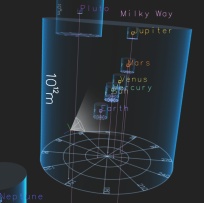
|
Scalable WIM: Effective Exploration in Large-scale Astrophysical Environments
YingGang Li, Chi-Wing Fu, and Andrew J. Hanson |
Abstract
Navigating through large-scale virtual environments such as simulations of the astrophysical Universe is difficult. The huge spatial range of astronomical models and the dominance of empty space make it hard for users to travel across cosmological scales effectively, and the problem of wayfinding further impedes the user's ability to acquire reliable spatial knowledge of astronomical contexts.Cosmic journey using a Scalable WIM map (Nested Power Cylinder)
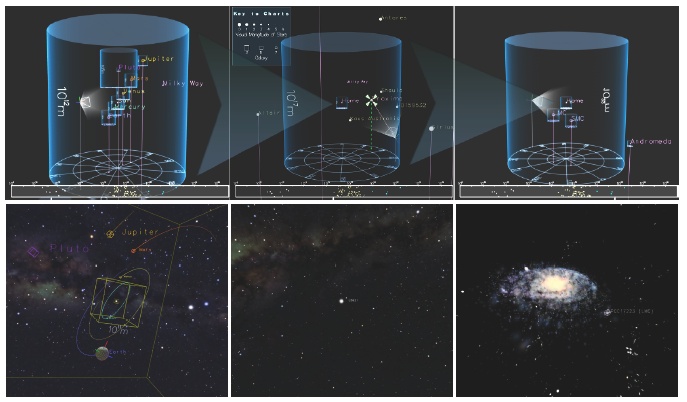
Power spatial scaling in a Scalable WIM map: A journey from the inner planets at 1012m (left), to the nearest star, Proxima Centauri at 1017m (middle), and finally to the Local Group of our Milky Way galaxy 1022m (right). (Bottom row): Scenes along the journey as seen from the first person view.}
Adding Context cues and Landmarks
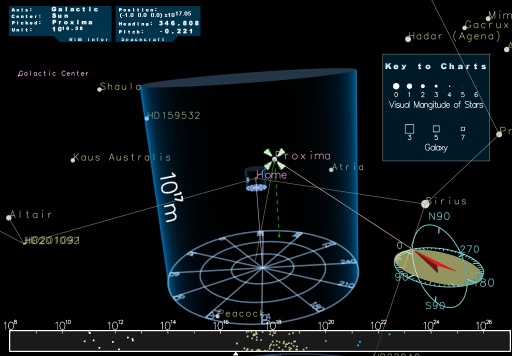
Context cues and landmark representations on the WIM interface: the power cylinder cue at 1017m, landmark icons and labels, MST edges, compass and overview map.
Log Sky (Logarithmic Space Mapping)
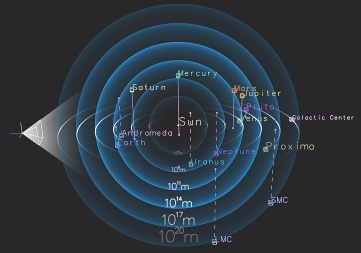
Log Sky: Showing landmarks of the sky at a single glance with logarithmically mapped space.
Path Planning
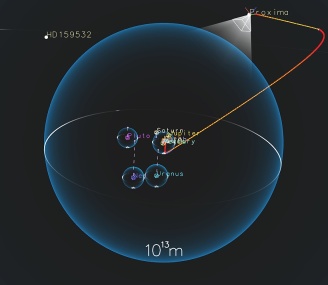
|
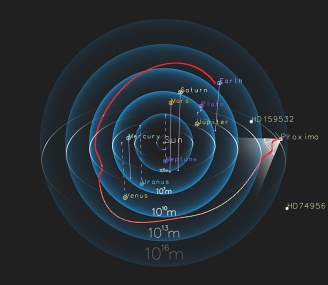
|
Plan a travel path from Centauri Proxima(1017m) to Earth(1011m): Path planning through continuous spatial scaling. Path detail is invisible at higher or lower scales (left) and the same path seen in logarithmically mapped eye space as a complete entity (right).
Download
Click the following link to download:- Manuscript: conference version (~5.5 MB)
- Manuscript: journal version (~4.0 MB)
- Animation demo: in Quicktime format (~46.5 MB)
BibTex
@article{li-2006-scalable-WIM,author = {YingGang Li and Chi-Wing Fu and Andrew J. Hanson},
title = {Scalable {WIM}: Effective Exploration in Large-scale Astrophysical Environments},
journal = {IEEE Transactions on Visualization and Computer Graphics (IEEE Visualization 2006)},
month = {Sep.-Oct.},
year = {2006},
volume = {12},
number = {5},
pages = {1005--1011},
}